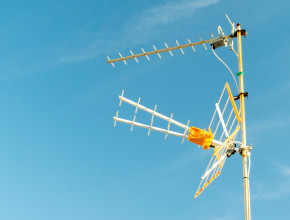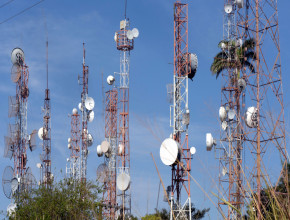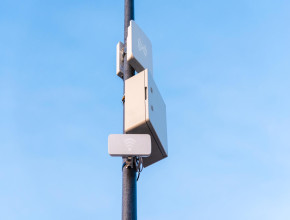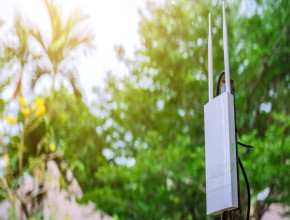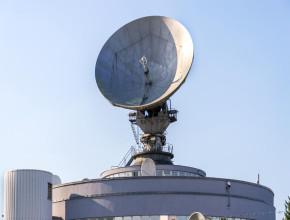
Safety is considered the first and foremost aspect while operating huge transport systems like airplanes or rockets. In this modern world, we see technologies and innovations in almost every field, especially in science.
It is through these technological advancements that operating such extravagantly huge vehicles have become easy, convenient, and secure.
In this blog, you’ll read about the flight termination system antenna and you will get to know about its features and working. So, without any further ado let’s get started!
What Is FTS Antenna?
The flight termination system (FTS) antenna is an extremely powerful and high-gain safety and test system which functions to send commands to the flight termination receivers on board as per the requirements.
These are applied in the launch of larger vehicles such as airplanes, missiles, and rockets. A military-grade, HF broadband vertical polarized omnidirectional flight termination system is a rugged all weathered model that uses a high-class copper alloy that doesn’t allow the settlement of rust.
A command destruct antenna or the FTS antenna is used across the world for airforce bases and missile ranges. It is a circular polarized high-gain antenna known for its signal-transmitting capabilities and its potential to identify objects in the air.
Distinctive Capabilities Of FTS Antenna
The ground control termination is the algorithm on which the flight termination antenna operates. Let’s quickly look at some more distinctive capabilities and features of the flight termination antenna that makes it different from other antennas!
-
Range Safety
Some launch systems use termination technology for the range safety of vehicles. It works by preventing the launch vehicles to not go out of the prescribed safety ranges of an area. There are many situations where it is not possible to identify and detect the ideal space for the safety areas. This is where the FTS antenna helps and indicates the right safety region.
-
Integrated Design Structure
The FTS antennas have an innovative and integrated design structure which assists them in developing and coming through a lot of obstacles as well as weather conditions. It is enclosed in a fiberglass radome and uses a copper alloy that does not require any field adjustments and tunings.
-
Cost Effective
If you are looking for a cost-effective and secure antenna then FTS should be your optimum choice! It has many cost-reducing features like designing, manufacturing, customizing, and qualifying ancillary hardware RF FTS hardware such as UHF hybrid couplers and flight-ruggedized RF cabling to seamlessly connect everything all together.
-
Fiberglass Enclosure
The fiberglass enclosure allows excellent transparency for RF signals and enough strength to withstand heavy wind loads. Its cylindrical shaped enclosure is used for low wind loading and to minimize the effect of ice formation on the antenna.
Types Of Flight Termination System Antenna
The FTS antenna/ Flight Termination System antenna has an average frequency range of 370 MHz to 500 MHz while its operation. It exists in various designs, types, and models according to the use into which it is going to be put.
Given below are some of the significant types of flight termination system antenna that you might find interesting!
-
Helix
A helical antenna is called so because it consists of conducting wires that are wound in the form of a helix. The Quadrifilar helical antenna are mounted over a ground plane while the omnidirectional antenna might not be.
The helix can further be classified into monofilar, bifilar, and quadrifilar antennas based on the number of a helix in it. These antennas radiate circularly polarized waves that come into application in the satellite antennas.
Whereas, the omnidirectional antenna radiates its power equally in all directions perpendicular to the antenna’s axis. They have a gain of 12dBic and are used for transmitting and receiving VHF waves for ionospheric propagation.
-
Circular Omni
An omnidirectional circularly polarized antenna consists of a coaxial cylindrical structure. The circular omni antenna categorized under the FTS antenna radiates radio frequencies evenly in all the directions surrounding the antenna.
It has the potential to transmit the radio signals fast and steadily in wireless communications. CP antennas have 3dBic gain and are designed to provide a compact size antenna that is easy to handle as well as dismantle.
The circular polarized antenna is used in widely used in networking communications such as radar navigation, a global positioning system (GPS), and base stations such as police stations and army base camps that require radio communications.
-
Vertical Omni
The vertical omnidirectional antenna is linearly polarized and has a gain of 3dBi with horizontal bandwidth of 360 degrees and vertical bandwidth of 80 degrees. It is a high-quality antenna having an average operating frequency of 370 MHz to 550 MHz range.
A vertical omnidirectional military antenna can work in any type of harsh climatic weather condition. It is manufactured using the latest and the most robust technology with premium quality materials.
This antenna has a capability to penetrate any obstacle in between and pass through walls while communicating from one point to another.
Conclusion
In today’s world, wireless communications have become a necessity. That is why it is undoubtedly correct to say that antennas have also changed the complex lifestyle of human beings into an easy and convenient one. They are used for several types of functions such as scanning, monitoring, receiving, transmitting, and performing surveillance.
Various uses of different categories and types of antennas include public safety, home, land and security, shipboard, military and defense, etc. It is through the applications of antennas only that you are able to read this blog sent by us. Antennas also act as radars to identify and prevent unwanted and undesired things such as enemy armies to enter a particular area.
Antenna Experts manufactures and customizes various kinds of antennas as per the client’s requirements such as military log periodic dipole antennas, RCIED jamming antenna, naval shipboard antennas, grid parabolic antenna, FTS ground station antennas, tactical radio relay antennas, ultra-wideband cavity-backed spiral antennas, fiberglass collinear antennas, HF broadband multiwire antenna and many more.

